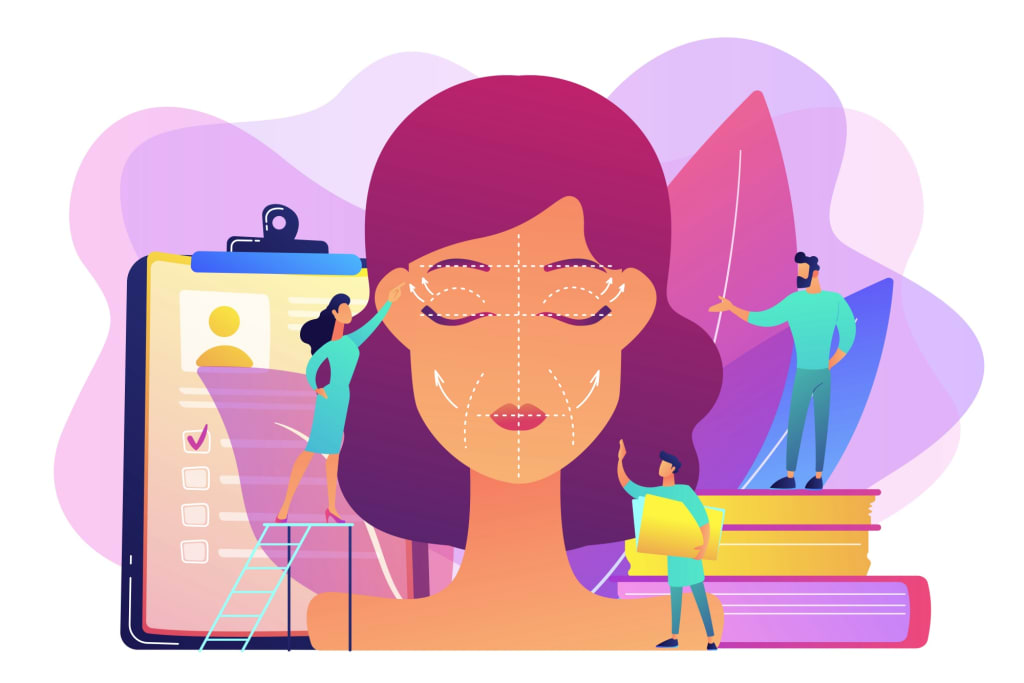Scientists Have Now Unlocked the Ability to Undo the Effects of Aging
Spending old age in a young, healthy body could be just around the corner

Face creams can cost as little as € 1 up to a mind-boggling € 1000 for 50 ml (1.7 ounces). In a world obsessed with looking young, no price seems too high for some people to look a few years younger.
The sad truth is that the creams, toners, lotions and serums that the cosmetics industry sells with the help of 13-year-old models with flawless skin don’t work.
As your cells age, your ability to produce natural oils decreases. The internal cellular processes break down. Your connective tissue becomes weak. Your skin dries out, becomes more wrinkled, less elastic and fragile.
Stopping skin aging with creams and face masks is like trying to plug a leak in a dam with your finger.
To successfully turn back the clock, we need to address the root cause of cellular aging. We must find a way to make our cellular machinery young again.
In a new study, researchers show that they’ve succeeded in doing just that. They’ve turned back the cellular clock by 30 years.
What happens when we age?
Aging isn’t a cosmetic issue. The wrinkles and flabby skin are signs of a deeper change your body and cells are going through.
The wrinkles are visible, but all other cells in your body become less effective and damaged too.
Little by little your organs lose function. Your body becomes less flexible, and your skin becomes saggy and wrinkled.
Why skin care products can’t stop aging
Aging isn’t limited to the skin. As we just discussed, aging begins deep inside your cells. The machinery that keeps your body running smoothly starts to sputter and fail.
To effectively stop the skin’s aging process, skin care products would need to reach inside the cells. They’d have to be able to repair the internal cellular processes.
If they could do that, they’d be considered a medical drug. They’d be subject to the same regulations as other drugs and dispensed in pharmacies. And, of course, we’d use them to rejuvenate other parts of our body as well.
Dermatologists will tell you that cosmetics really only scratch the surface.
The magic ingredients that promise youthful, wrinkle-free skin stay in the outer layers of the skin.
If there’s an effect, it’s temporary.
The truth is:
Because these over-the-counter (OTC) wrinkle creams aren’t classified as drugs, they’re not required to undergo scientific research to prove their effectiveness. If you’re looking for a face-lift in a bottle, you probably won’t find it in OTC wrinkle creams. The benefits of these products are usually only slight.
Researchers have found a way to turn back the cellular clock
Scientists at the Univerity of Cambridge have developed a new technique to rejuvenate skin cells. They’ve turned back the internal clock of the cells by an incredible 30 years.
They developed a method called MPTR (maturation phase transient reprogramming’) and exposed 53-year-old skin cells to Yamanaka factors for 13 days.
Yamanaka factors are found in embryonic stem cells. When the cells are exposed to Yamanaka factors, they turn back into ‘young’ stem cells. These cells can transform into any other cell type.
In the experiment, the scientists showed that the cells they’d taken from their older subject became young again.
Most importantly, they became young without losing their function or identity as skin cells.
With genome analysis, they confirmed that the cells still had the properties of skin cells.
They also showed that the cells behaved like youthful skin cells. When they simulated a skin wound, the cells showed the faster heating ability typical of younger skin.
Then they examined the genomic age of the cells and confirmed that the cells had fewer chemical markers indicating age.
All these tests showed that the reprogrammed cells were now 30 years younger than they were originally.
They behaved as if they came from a 23-year-old.
“Our understanding of ageing on a molecular level has progressed over the last decade, giving rise to techniques that allow researchers to measure age-related biological changes in human cells. We were able to apply this to our experiment to determine the extent of reprogramming our new method achieved.”
One of the first applications will probably be to develop drugs to make skin younger. It can also be used to accelerate the healing of skin that’s been cut or burned.
But, this groundbreaking discovery will not only benefit people trying to look young again. Researchers are looking at ways to reprogram other old cells to heal problems brought on by age.
They’re discussing new therapies to revitalize immune cells or techniques to cure diabetes or Alzheimer’s.
In the future, this research may also open up other therapeutic possibilities; the researchers observed that their method also had an effect on other genes linked to age-related diseases and symptoms. The APBA2 gene, associated with Alzheimer’s disease, and the MAF gene with a role in the development of cataracts, both showed changes towards youthful levels of transcription.
These results are very exciting.
Not because we can soon make older people look young, but because the rejuvenation of our entire bodies is now within scientific reach.
We don’t fear old age because our skin is no longer elastic but because our bodies stop working and we get ill. We’re afraid of losing our health and our ability to enjoy life.
Turning back the cellular clock would make old age something to look forward to.
We’ve just started to understand why our life expectancy is limited to a certain number of years. With these new results a healthy, longer life is around the corner.
About the Creator
Ronke Babajide
Woman in IT, Natural Scientist, Life Coach, Speaker, Podcaster, Writer, Founder
Host of the “Women in Technology Spotlight” https://bit.ly/3rXvHvG
Creator of "The Queen Bee Hive" https://thequeenbeehive.net/en/






Comments
There are no comments for this story
Be the first to respond and start the conversation.